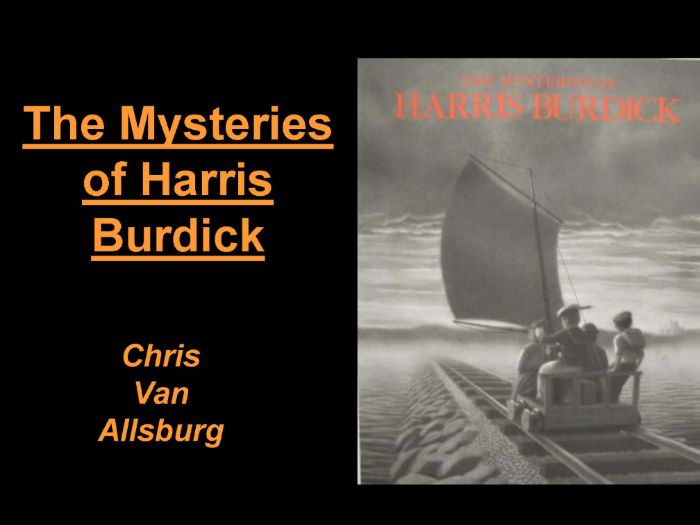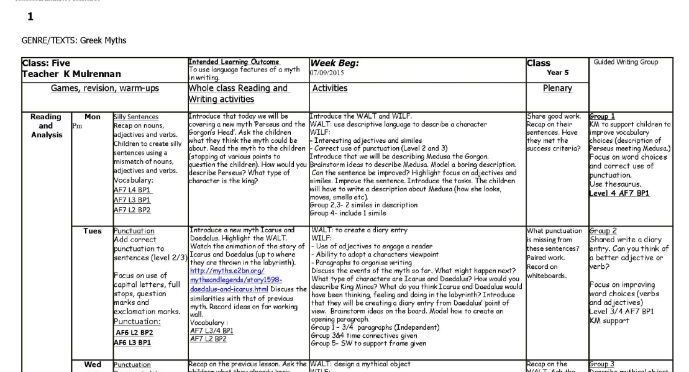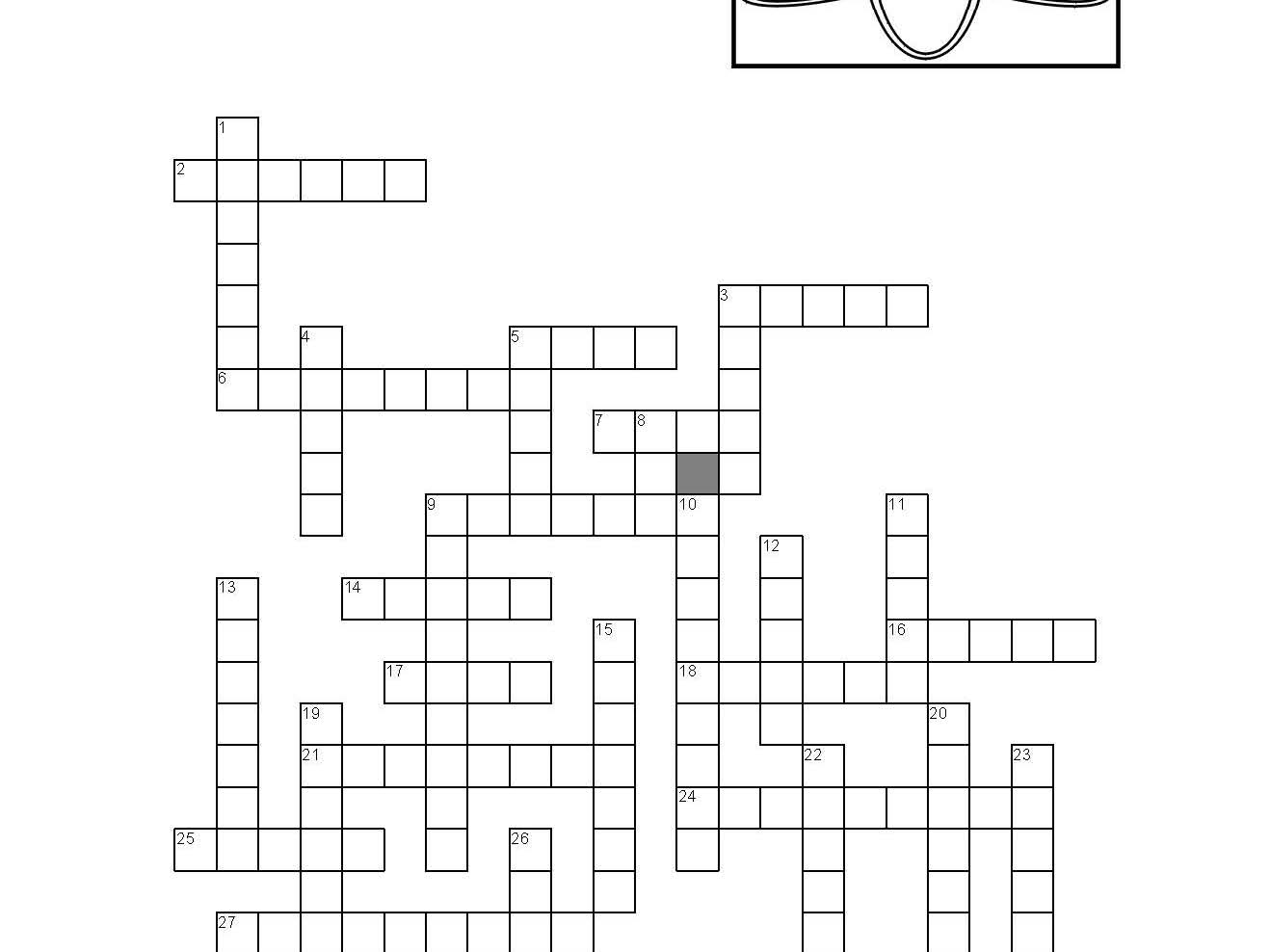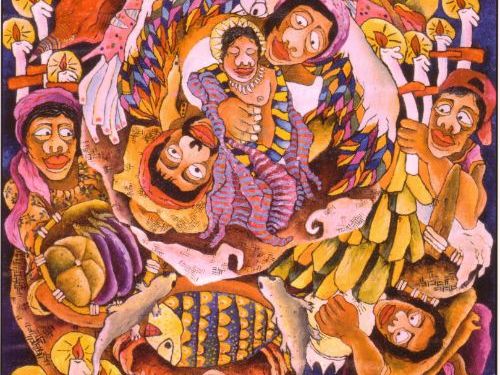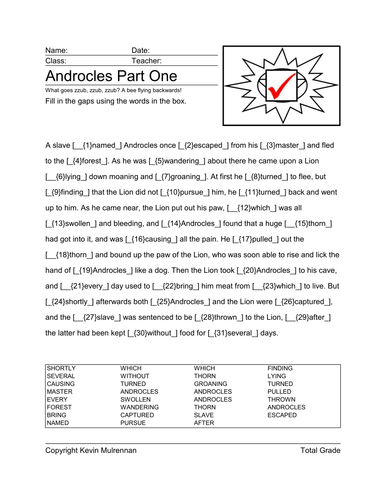404Uploads
119k+Views
40k+Downloads
English language arts

Poetry year 4 Two Weeks of Planning Magic Box Kit wright Material
Two weeks Planning. the powerpoint is a sample. There’s other files in the planning
Great powerpoint on the work of Kit Wright.
The magic box really inspires kids.
Sampl planning Ask children to remind you about what a simile is and discuss why it is effective to use when writing. Explain that today we will be creating some poems of our own by creating some similes. Write ‘as thin as’ on the board and ask everyone to think of very thin things. Push children to think harder past the more obvious objects. Prompt them if necessary ‘what part of an animal is very thin?’ and so on. Write other prompts such as ‘as tall as, as large as, as hot as’. Draw some circles on the board and write a prompt above them ‘The sun is like…’ See how many other things they can think of that are round like the Sun. Turn the circles into objects they suggest. Now encourage children to extend their ideas further.
Explain that today children will be making some simile poems of their own about a monster. List some features of a monster and some adjectives that describe a monster.
HA work alone to create a simile poem about a monster.
MA supported by KB, use a writing skeleton for their poem which has some features already listed.
LA supported by AS, use a writing skeleton for their poem which has the features already listed, make a list of adjectives that might describe a monster.
Read through some of children’s poems together. Discuss what similes they have used and the effect it has on their writing, why is it more effective?
Can children compare objects?
Can they use adjectives?
Can they extend their own ideas and thinking?
Can they choose effective similes?

English year 5 and 6 The Mysteries of Harris Burdick Planning and Powerpoints Literacy year 5
A great collection for teaching this interesting topic.
You get powerpoints and planning.
Sample :
Punctuate sentences accurately, including using speech marks and apostrophes.
Use commas to mark clauses.
Group and classify words according to their type and meaning.
Read a variety of texts, commenting on the author’s choice of vocabulary.
Construct sentences which are punctuated correctly; including the use of commas, speech marks and apostrophes.
Use a range of connectives to join sentences.
Experiment with complex sentences.
Whole Class Shared Learning
Discuss pronouns (homework)
Define each type of word: Noun, adjective, verb and adverb. Build up a sentence as we go.
Show the children a picture on the whiteboard of a horse galloping and of a lightning bolt. Children to write down 3 (LA) or 5(MA and HA) important nouns from the picture. Share. On the left of the noun, children to write an adjective to modify or describe the noun. Share. After the noun, children to write a verb and then an adverb to qualify the verb.
e.g. The black horse galloped elegantly along the beach.
Praise the children on yesterday’s literacy work – they showed knowledge of the function of nouns, adjectives, verbs and adverbs (HA showed knowledge of the difference between common, proper and pro nouns).
Children to name a range of punctuation – I record on the board (I do not add to it at this point).
Ask volunteers to illustrate uses of the punctuation named. Look on the punctuation pyramid – have we named any L5 punctuation? This is what we should be aiming at all the time.
Children to have a variety of sentences to up level punctuation on their whiteboards.
Come back to ‘The Mysteries of Harris Burdick’. Read through all of the captions and talk about ‘reading’ the illustration. Allow children time to talk about the ‘mystery’ – what do they think happened to Harris Burdick?
Choose a picture from ‘The Mysteries…’ and list all of the questions which it provokes. What do children think of the pictures? Do the captions answer any of the questions?
Talk about the settings in the pictures – often they are recognisable, familiar settings where things are not as they seem. Explain that we would call this ‘Stories in a familiar setting’.
Model the task.
Use PPT to study speech punctuation.
Use the pictures from ‘The Mysteries…’ to write some possible dialogue.
Model possible conversations, including synonyms for said and adverbs plus adverbial clauses. With correct punctuation.
Look at some of the pictures from ‘The Mysteries …’
Think / discuss some of the characters in the pictures. Use adjectives to describe them – give them names. From the pictures come up with verbs to describe what they are doing then add adverbs and adverbial clauses.

Back to School The Piano by Aidan Gibbons Year 6 Literacy Planning
Great planning and powerpoints on this fascinating topic.
sample :
Speaking
• Tell a story using notes designed to cue techniques such as repetition, recap and humour
Drama
• Reflect on how working in role helps to explore complex issues
Understanding and interpreting texts
• Infer writers’ perspectives from what is written and from what is implied
• Compare different types of narrative and information texts and identify how they are structured
Creating and shaping texts
• Reflect independently and critically on their own writing and edit and improve it
• Experiment with different narrative forms and styles to write their own stories
Sentence structure and punctuation
• Adapt sentence construction to different text-types, purposes and readers
• Punctuate sentences accurately, including using speech marks and apostrophes
Understand, analyse and compare several ‘visual texts’.
Comment on the technical parts of a visual text.
Write a review using correct format and language.
Whole Class Shared Learning
Guided and Independent Activities:
Start to understand what is meant by a ‘visual text’. What do we know so far about narrative writing? Create a list of facts to add to working wall including: fictional, dialogue, opening etc.
Explain to the children briefly, that they are going to watch a short, animated film, entitled ‘The Piano.’ Explain also that there is no dialogue or narration; it will be up to the children to decide what the film is about, to answer simple questions, raise some of their own and provide their own explanations for what they see.
Tell the children that they’re going to watch the film, quietly and without comment at first. Then, watch ‘The Piano’ by Aidan Gibbons.
Model completing thinking feeling and speech shapes linked to the narrative.

108 Cloze Exercises Aesop's Fables KS1 KS2 Literacy Greek Roman Myths Aesop
108 cloze exercises on Aesop’s Fables.
Great for Literacy lessons. Gives lower ability pupils confidence.
The Cloze worksheet is a standard exercise for improving students’ understanding of word context.
The student then fills in the words on the worksheet based on an understanding of the sentence and the list of potential words removed from the text.
The cloze procedure is a reading comprehension activity in which words are omitted from a passage and students are required to fill in the blanks. This procedure is incredibly useful in reading instruction because it can be easily done by any teacher and provides valuable reading comprehension information.

Year 5 Autumn 2 Literacy Inc Remembrance Sunday Morpurgo etc
Some planning and powerpoints.
Sample:
(BOOKS)
Go through the first few slides of the ppt. Discuss that we are going to be writing a letter pretending we are a soldier on the front line writing to their family or friend.
Have an A3 letter on the board. What do chn notice straight away?
Discuss the purpose. Why do we have the date? Why do we have the address?
Resources:
Checklist
Letter example – one per child and A3 for WW
(BOOKS)
Quickly recap the lesson from yesterday.
Quick fire feature checklist quiz
Read the passage. Discuss any words that are unfamiliar.
Chn are to work as a class to identify the main events. Can they now order the events? Remind chn that each event is a new paragraph
Can we write linking words for each of the paragraphs? All chn are to have a go and write linking sentences/words in between their events.
Resources:
Read passage from war horse of an event for the chn to write a letter from.

Ted Hughes Iron Man Planning and Worksheets
Some nice files on this interesting topic.
About a dozen word documents with planning.
A couple of useful adobe files.
Worked well in my classroom!

Back To School Kensuke's Kingdom Year 4 to 6 Planning and worksheets
I’m now retired from teaching after decades in the classroom.
I’d like to help the younger generation.
One aspect I don’t miss in Sundays. Trying to fill in planning grids that were rarely used or looked at. What a nightmare!
So I’ve put together my teaching plans etc from the various schools I was in.
The zip contains loads. I’ve put a sample in the ordinary download to give you a flavour
It’s mainly to do with Kensuke’s Kingdom. But there’s othet stuff too included for free. There’s stuff on Dolphin Boy, Butterfly boy etc.
Feel free to adapt for your planning grid.
Sample planning :
Recount one event from holiday. Note features and language patterns to list.
Chronological, time connectives, 1st person, past tense, personal views. Write a recount for the Easter holiday. Individual revision task. Focus on organization and links using temporal connective phrases. Personal views.
Introduce ch 1 for Kensuke’s Kingdom. Record initial response with prediction. Select examples to show Michael’s feelings. List reasons for and against yourself and family setting off on a round the world sail, Justify relating to evidence selected from the text.
Red: format provided
Gr/Or: list reasons from two places
Bl/Y: form contrasting sentences… begin with, “even though…”
Read ch 2. In pairs. How does Mom feel about the trip and Dad’s ideas? What is the alternative? 1. Why has Michael decided now to tell his story?
2. Who are the members of Michael’s family?
3. What do the family do together on the weekends? Can you describe how it makes them feel?
4. Why do the family stop sailing?
5. What is the atmosphere like in the house?
6. What happened to Michael’s best friend?
7. What happens to Michael’s father and why?
8. What do you think happens next?
9. Describe the father when they meet up again. What sort of mood is he in?
Read chapter three. List examples of each character’s feelings. How do Mom and Dad’s feelings compare.
When Michael and his family first set sail, how many miles a day do they want to do?
How many miles a day do they actually do?
What game do Michael’s parents play?
What do they eat?
What creatures do they see off the coast of Africa?
In November they went to Brazil. Where did they stop?
What did Michael do in Brazil?
What did they do on Christmas Day?
Describe, in your own words, the incident with Stella Artois. Record the incident with Stella as a personal diary entry.
Refer to events in the chapter.
HA: personal style to include worries for the future.
MA: Organise into paragraphs with links
LA: use ed-ing-ly openers.
You get 8.7 mb of stuff so that’s good value imo. In it are lesson plans, powerpoints, questions etc.
Enjoy your Sundays!

Year 5 Literacy Planning Autumn Term KS2 Greek Myths Big Write
This is a zip file containing Literacy planning for a year 5 class (Autumn term)
It consists of 14 short term plans I designed. There is one Literacy lesson per day.
You will get 14 Microsoft Word documents. They are based on the Greek myths.
I’ve also included for free some extra teaching materials that you can use. I’ve included too 3 medium term plans , one for each term). These cover plans and ideas not just for Literacy, but other subjects as well.
I’ve also included an extra week from the next term. Feel free to use it to plug any gaps.
This will help you do your own planning. Feel free to cut and paste into your own school’s plans.
Ideal for someone who had to do a term’s supply like I had to do.
Please bear in mind:
every school is different. My plans assume you have the aide of a TA, but this is not essential. There is no differentiation in the planning. Everyone does the same thing to the best of their ability.
you may want to add your own detail. These are short term plans remember.
I have used walts and wilts. Your school may do something different.
A very few number of weeks have a small gaps for things like tests and inset days. Use the extra week one planning for the next term (included for free) if you wish.

Literacy Year 5 or 6 Stories from Other Countries 3 Weeks Planning Ahmed's Secret Heide
Great planning for year 5.
Plenty to keep you going for three solid weeks.
Powerpoints, planning, worksheets etc etc
The zip has the lot. I have put up some on the ordinary download so you can look.
Sample planning :
Genre: Narrative Unit 3 – ‘Stories from other cultures’
Focus Texts: ‘Abela’ by Berlie Doherty (class reader), ‘The day of Ahmed’s secret’ by Florence Parry Heide, ‘Stories from around the world’ Usborne books.
Objectives
Primary Framework Phase 1
• Create roles showing how behaviour can be interpreted from different viewpoints
• Know and apply common spelling rules
• Infer writers’ perspectives from what is written and from what is implied
• Compare different types of narrative and information texts and identify how they are structured
• Experiment with different narrative form and styles to write their own stories
Adapt sentence construction to different text-types, purposes and readers
Punctuate sentences accurately, including using speech marks and apostrophes.
Learning/Writing outcome for unit: Write a story from a different character’s point of view. Reflect on writing critically and edit it against success criteria.
LO: Whole Class Shared Learning
Guided and Independent Activities: Plenary:
M Understand and use the word ‘culture’.
Begin to recognise the features of a story from another culture. Show the words ‘narrative’ and ‘fiction’. Children to TTYP and talk about what they mean. Come back together and elicit that they are words for ‘story’. We are going to be studying a narrative unit for two weeks. Briefly recap the five structural features of a story. What types of stories have we studied so far? (Myths, legends and stories by a significant author).
Show the word ‘culture’. Children to TTYP and discuss.
Come back together and explain that a culture refers to “the attitudes and behaviour that are characteristic of a particular social group.” Emphasise that we are not necessarily talking about different religions or even other countries – there are a lot of different cultures even within one country.
Lead to class discussion.
Provide children with copies of ‘The Day of Ahmed’s Secret’ – explain that this story is from Africa. Ahmed lives in a city called Cairo – the capital of Egypt. Show on a map. Have we heard anything about Cairo in the news recently?
Read half of the story and then challenge children to discuss on their tables:
The features of the story.
Their predictions about Ahmed’s secret.
Come back together, read the rest of the story and discuss.
How is Ahmed’s life different from your lives? In his culture it is perfectly normal for children to be working very hard and taking over the family business from his Father. What does his pride at being able to write his own name suggest about his level of education? About his place in society?
Create a working wall list of features to include:
Capital letters used at the start of each sentence and full stops at the end.

Years 1 to 4 Complete Year's Religious Studies R.E. Planning
For all years 1 to 4 complete planning all terms.
Easily adaptable up or down, so will save you hours.
Catholic in flavour but other religions included.
Contains powerpoints, planning, worksheets, info etc.
Why not look at the bundles. Incredible value and it’ll save your precious Sundays.
Ideal if you have been chosen to deliver R.E.
N.B. You will need to spend some time organising as I am retired. Also not a great deal of year 2 stuff. If you want superorganised stuff, please look at my RE powerpoint stuff,
sample planning :
Learning and growing as the People of God:
Short-term Planning Unit I – Easter
Most children will know that the four Gospels contain accounts of the Resurrection of Christ. They will be able to understand the transforming effect this had upon the disciples. The children will know that the Ascension reminds Christians of the promise of Christ to remain always with them.
Less able children will be able to recall parts of the Resurrection story from some of the Gospels.
More able children will have a greater understanding of the importance of the Resurrection for Christians today and of their belief in the presence of Christ in the Church and in their lives.
Start date: Finish Date
Additional details including groupings, differentiation Vocabulary and
Key Questions Resources Prayer
Revise with children previous learning about the Church’s celebration of Easter.
Recall that it is a season of fifty days and revise some of the colours and symbols of the season that are used in the Church’s liturgy.
Activity:
In groups - give children the colours and the symbols to match.
White Easter light
innocence
purity
joy
triumph
glory
Red Feasts of the Lord’s Passion, Blood and Cross the Passion
blood
fire
God’s Love
martyrdom
Palm Sunday
Purple Good Friday penance
humility
melancholy
Gold Easter joy
Children to read one of the four Gospel accounts of the Resurrection:
Matthew 28: 1-15, Mark 16: 1-17, Luke 24: 1-43, John 20: 1-21
Group Activity:
Must - Highlight the words and actions of the disciples and the women and the words and actions of Jesus.
Should/Could -Create a resurrection appearance table. Include in the headings: What the disciples were doing, what they saw, and what Jesus said and did.
(Use the above Gospel accounts to fill in the table).
Plenary:
Children to imagine that they are about to meet somebody who had never heard of Jesus before. What would they tell this person about the resurrection? What would be the most important information that they would need to pass on?
What were the words and actions of ____ at the resurrection of Christ?
Markers Remind the children that prayer time is an
important opportunity for us to recognise
the presence of Jesus in our lives.
Provide moments for silent prayer. Use
music and appropriate Easter focus,
Use the Resurrection and Ascension
stories during Collective Worship.
Other links/Homework

Year 5 Poetry Planning Poetic Style – Valerie Bloom/Pie Corbett
Nice planning :
sample :
Read 3/4 Pie Corbett poems (see list below this plan or plan resources) – NOT Wings. Discuss the poems read eg which one did you like best and why? Is anything similar about the poems? Focus their attention onto things that are typical of Pie Corbett. Use 3 headings: Subject matter/Style of poem/Language. Discuss each of these (subject matter is what the poem is about eg nature, travelling, observations etc). Style is free verse or strict rhythm/regular or irregular rhyming patterns, use of speech or dialogue etc. Language refers to the vocabulary – the use of adjectives and descriptions, metaphors or similes eg ”I heard the paving slabs groan as they muscled for space.” (See plan resources.) Start looking at poems of Pie Corbett under these 3 headings. Give chn time to talk in pairs/small groups about each heading and take feedback. Ask chn to come up and scribe some ideas under each heading. Explain that we will now be exploring some of these headings in more detail. Easy
Give chn a selection of Pie Corbett poems. Model reading a couple to the chn. Discuss what was similar or different in terms of the subject matter. Chn to then read some more poems in pairs and start to sort them into groups that are similar and why. Stick the similar poems onto A3 paper and make rough jottings about why they are similar. TD Medium/Hard
Work in pairs or 3s. Take turns to pick a Pie Corbett poem and read it out loud to rest of group. Repeat this until lots of poems have been read. Provide highlighting pens & poetry checklist (plan resources) to guide their discussion. Ask chn to go back over each poem carefully & highlight any language that makes the poem interesting eg adjectives & descriptions. Give chn the metaphor & simile example sheet (plan resources) to refer to and see if they can highlight any of these in another colour. Make sure chn annotate their highlighting with their own comments. Is there anything linking these Pie Corbett poems together? Does he repeat any language techniques? Finally they look at the style of the poems. Is there a regular rhythm in the poems? Do they use speech?

year 1 Literacy Fantasy World Planning
Three great powerpoints.
Two great flipcharts.
Planning.
Sample:
Discuss fantasy settings we know so far as a whole class using Fantasy PP 1.
Reinforce the concept of a fantasy setting by showing lion, witch and wardrobe where child walks into Narnia clip:
http://www.youtube.com/watch?v=JMYU5vSaal8
In talking partners discuss adjectives describe the setting. Beach ball/Bean bag ideas.
Feedback to group.
Recap yesterday’s learning. Then use the Fantasy PP 2 and go through with the children how to create their own fantasy world.
Explain the activity – children to create on paper their own fantasy world and label it.
Must include:
Setting
Characters
Magical objects
Watch the clip from Harry Potter in the magic shop and encourage the children to look out for all the magic objects: http://www.youtube.com/watch?v=hDR5XgHHLBY and http://www.youtube.com/watch?v=szEFdhOHtrI (0-40 seconds)
Make a list of all the objects they could see, what they could be for, using Fantasy PP 3.
Explain the activity; children will be creating a magic object from their setting they created yesterday or a new one. What does it look like? What is it called? Etc

Year 4 Literacy Newspapers reports Six weeks short term plans
6 weeks short term plans.
sample
What newspapers and magazines can the pupils name?
What are the articles usually about?
Discuss the purpose of a newspaper.
WALT – know the features of a newspaper text.
WILF – good expression
Read through the opening paragraph of a newspaper article. Children to discuss the features and the structure of the opening paragraph.
Newspaper articles have all of the important information in the opening paragraph. The opening paragraph is not overly descriptive. This information includes who, what, when, where, why and how. (It is written this way because most people do not read an entire newspaper article all the way through. So newspaper writers put the most important information at the beginning).
Children wrote learn the opening paragraph of a newspaper article. Firstly as a class, followed by group work.
Recap the features of an opening paragraph of an article. SW – target group to discuss the features of the article.

Year 1 Maths English Planning
Planning for English and Maths. 56 files.
sample:
Text:
This is the bear and the scary night
Genres covered in this unit:
Narrative SPAG focus:
Monday: spelling patterns
Tuesday: use and to join clauses
Wednesday: high frequency words
Thursday: high frequency words
Friday: time connectives
Key teaching input/texts/questions/
clips etc Steps to Success
Read the story This is the Bear and the scary night
Discuss character, setting, key events etc…
Discuss what happened in the beginning, middle and end of the story. Explain to the children that this week they are going to write their own story similar to the bear and the scary night.
Ask children to describe their character to their partner (can be their favourite toy or the teddy they bought into school on Friday).
Ask children to share their ideas about their story.
What is the setting?
What are the characters doing?
What is the problem?
How are the characters feeling?
How does your story end?
Mild: describe your main character
Spicy: share your ideas with your partner
Hot: listen attentively to your partner
Extra Hot: Act out key events from your story
LA Activities MA Activities HA Activities
Read to Write
Mrs Preston Phonics
Mrs Simpson Talk for writing and act out their story
Photos for books
Resources: The bear and the scary night book, cards with questions
Give 3 minutes for children to recap their story.
Who is their main character?
What happens at the beginning, middle and end of the story?
Model how to put key ideas onto their plan.
Steps to Success
Mild: recap your story with your partner
Spicy: Identify the beginning, middle and end of your story
Hot: Write key ideas onto your story plan for the beginning, middle and end.
Extra Hot: Check your partner’s plan is sequenced correctly
Bundle

Bargain bundle Literacy Crosswords Word Searches Antonymn Synonym KS2
Bargain bundle
worksheets on
Antonymns
Synonymns
Literacy word searches
Literacy cross words

Autumn Planning Year 5 Literacy ks2 & Aesop Fables Worksheets
Reclaim your Sundays!
Literacy planning for year 5 for the Autumn term.
Plus 108 great close worksheets on Aesop’s fables.
Planning covers topics such as Famous Authors’ Plans, Myths, Legends and Fables, Recounts.
You get over 40 mb of material.

Wolves in The Wall Planning Plus Literacy Arguments Neil Gaiman
Great 4 weeks planning for this Literacy topic.
Really nice powerpoints.
Plus free bonus. Plenty of argument planning using Olympics.
Example planning :
Identify and discuss the various features of a fiction text, including characters, settings, themes and dilemmas, the author’s intentions, the structure and organisation of the text and the way language is used to create effects on the reader.
Speaking
Use the techniques of dialogic talk to explore ideas, topics or issues.
Creating and shaping texts
Set their own challenges to extend achievement & experience in writing.
Understanding and interpreting texts
Understand how writers use different structures to create coherence and impact.
Text structure and organisation
Use varied structures to shape and organise text coherently
Sentence structure and punctuation
Express subtle distinctions of meaning, including hypothesis, speculation and supposition, by constructing sentences in varied ways
Use punctuation to clarify meaning in complex sentences
To produce several pieces of writing based around the focus text.
To learn and identify the features of a formal/impersonal text and comment on occasions where this may be necessary.
To produce a formal letter, speech and broadcast using appropriate form, features and content.
Remind children of last week’s immersion into the focus text. TTYP – what did you think of the text? If you could talk to the author, what would you say to him? Ask him?
Display a ‘Likes/Dislikes/Patterns/Questions’ board on the whiteboard. Explain that we are going to focus on the ‘patterns’ section today.
Re-read the last few pages of the book and add ‘false endings’ to the patterns section.
Have some photocopied pages from the book in the centre of the tables (each table to have different pages).
Give groups ten minutes to note any patterns they see on whiteboards.
Come back together and note on the board to include:
False endings.
Simile
Lucy asking her Mother, Father and brother for advice, always in that order.
Adjectives for the noises she hears.
Alliteration and onomatopoeia.
Phrase “You know what they say…”
Appearance of pig puppet.
What effect do these patterns have on the reader? They give the text fluency, a rhythm almost like a poem. They make the text easier to read and digest. The repetition also mimics the repetition of Lucy’s pleas to her family to listen to her about the noises. They make the reader frustrated on Lucy’s behalf.
Have one child write a definition of ‘atmosphere’ on a sentence strip for the working wall. A general feeling or mood.
There are a few different atmospheres in this book. Discuss. List tension, frustration, relief etc on the board.

Christmas Powerpoint Free Freebie Lesson Taster Advent Religious Studies
A freebie.
A nice powerpoint on the religious aspect of Christmas.
I’m hoping to interest you in buying my series of Christmas lesson on R.E.

Aesop Fable Cloze Test Androcles Classics Latin
A cloze test on an Aesop fable.
If you like this one I have a collection in my shop.
You get many, many more of them at a reasonable price.
Great timefiller for Froday afternoons or homework.
If you like the product, please leave a good review, especially as it’s FREE! Thank you!

Free Freebie Good Samaritan Lesson Simple and Effective for Year 4 R.E. Literacy
Got me a job so must be reasonable!
A simple lesson plan, worksheet, powerpoint.
Great for discusiing with pupils.
I have plenty of maths, literacy, languages and Literacy stuff so have a look after downloading this freebie.


